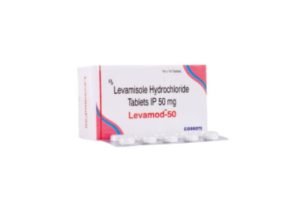
Roxithromycin Overview
Roxithromycin is a semi-synthetic macrolide antibiotic, closely related to erythromycin. It inhibits bacterial protein synthesis by binding to the 50S ribosomal subunit, thereby preventing bacterial growth. It is primarily bacteriostatic but can be bactericidal at higher concentrations against certain organisms. Roxithromycin is effective against many gram-positive and some gram-negative bacteria, making it useful for respiratory, skin, and soft tissue infections.
Brand Names and Formulations
Roxithromycin is marketed under various brand names, including:
- Rulide
- Surlid
- Roxar
- Biaxsig
Common formulations include:
- 150 mg tablets
- 300 mg tablets
- Oral suspension (in some countries)
Uses/Indications
Roxithromycin is used to treat a variety of bacterial infections, including:
- Respiratory Tract Infections:
- Community-acquired pneumonia.
- Bronchitis and exacerbations of chronic obstructive pulmonary disease (COPD).
- Pharyngitis and tonsillitis caused by Streptococcus pyogenes.
- Skin and Soft Tissue Infections:
- Impetigo, cellulitis, and erysipelas.
- Acne (in some cases).
- Ear, Nose, and Throat Infections:
- Sinusitis, otitis media, and laryngitis.
- Genitourinary Tract Infections:
- Nongonococcal urethritis (chlamydial infections).
- Cervicitis caused by Chlamydia trachomatis.
- Prophylaxis of Meningitis Contacts: Used to prevent the spread of Neisseria meningitidis.
Dosage
- Adults:
- Standard Dose: 150 mg twice daily or 300 mg once daily for 5 to 10 days, depending on the infection.
- Children:
- Oral Suspension: 5-8 mg/kg/day, divided into two doses.
- Specific Doses for Indications:
- Respiratory Tract Infections: 300 mg once daily for 7-10 days.
- Skin Infections: 150 mg twice daily or 300 mg once daily for 5-10 days.
- Chlamydial Infections: 300 mg once daily for 10-14 days.
Side Effects
Common side effects of Roxithromycin include:
- Gastrointestinal Effects: Nausea, vomiting, abdominal pain, and diarrhea.
- Allergic Reactions: Skin rashes, itching, and, rarely, more severe hypersensitivity reactions.
- Liver Toxicity: Elevated liver enzymes and, in rare cases, hepatitis.
- QT Prolongation: Risk of prolonging the QT interval, which can lead to arrhythmias.
- Headache and Dizziness: These are relatively mild and self-limiting side effects.
- Taste Disturbances: Alteration or loss of taste is a rare but reported side effect.
Contraindications
Roxithromycin is contraindicated in:
- Hypersensitivity to macrolides: Allergy to roxithromycin or any other macrolides (e.g., erythromycin, clarithromycin).
- Severe Hepatic Impairment: Roxithromycin is metabolized by the liver, and its use should be avoided in patients with severe liver dysfunction.
- Concurrent use with drugs that prolong the QT interval, such as antiarrhythmics (e.g., amiodarone, sotalol), antipsychotics, and certain antifungals (e.g., ketoconazole).
- Myasthenia Gravis: Roxithromycin can exacerbate the symptoms of myasthenia gravis.
Drug Interactions
- CYP3A4 Substrates: Roxithromycin may interact with drugs metabolized by the CYP3A4 enzyme, although to a lesser extent than erythromycin.
- Theophylline: Increased levels and toxicity risk.
- Warfarin: Enhanced anticoagulant effect, increasing bleeding risk.
- Ergot Alkaloids: Increased risk of ergot toxicity.
- Digoxin: Roxithromycin can increase digoxin levels, leading to toxicity.
- Antacids: May reduce the absorption of roxithromycin if taken concurrently. It is recommended to take roxithromycin 1 hour before or 2 hours after antacids.
- QT Prolonging Drugs: Concomitant use with drugs that prolong the QT interval increases the risk of cardiac arrhythmias.
Special Considerations
- QT Prolongation: Patients with a history of cardiac arrhythmias or those taking other QT-prolonging medications should be monitored closely.
- Liver Function: Patients with mild-to-moderate liver impairment should have their liver function monitored, and the dose may need adjustment.
- Renal Impairment: No significant dose adjustment is required in patients with renal impairment, but caution is advised in severe cases.
- Pregnancy and Lactation: Roxithromycin is classified as pregnancy category B. It is generally considered safe but should be used only if the benefits outweigh the risks. Use during breastfeeding should be avoided unless absolutely necessary, as it may pass into breast milk.
- Macrolide Resistance: Overuse of roxithromycin can lead to resistance, especially in organisms like Staphylococcus aureus and Streptococcus pneumoniae.
Conclusion
Roxithromycin is an effective macrolide antibiotic with a wide range of indications, particularly for respiratory, skin, and soft tissue infections. It has better gastrointestinal tolerance and fewer drug interactions compared to erythromycin, making it a more favorable choice in certain cases. However, the risks of QT prolongation and liver toxicity, as well as its interactions with other medications, require careful consideration when prescribing. Regular monitoring of liver function and consideration of drug interactions can help ensure safe and effective use.







